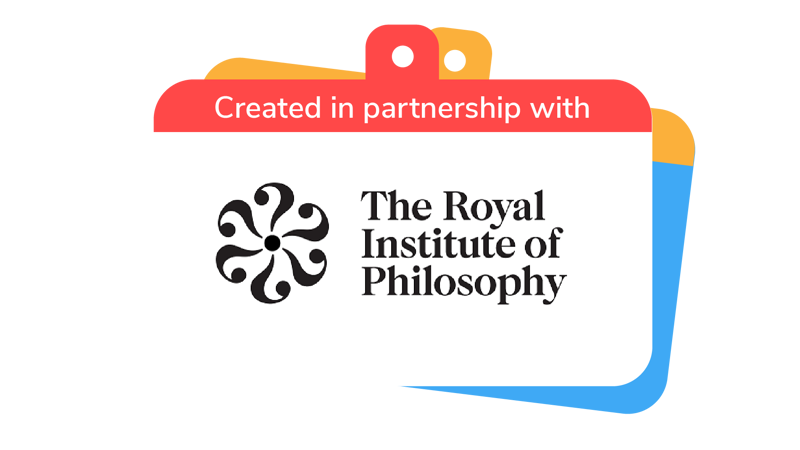
My Value Vault
You’ll need
- Pens or pencils
- Scrap paper
- Whiteboard or large sheet of paper
Before you begin
- Use the safety checklist to help you plan and risk assess your activity. There's also more guidance to help you carry out your risk assessment, including examples. Don’t forget to make sure all young people and adults involved in the activity know how to take part safely.
- Make sure you’ll have enough adult helpers. You may need some parents and carers to help if you’re short on helpers.
What is a value?
- Gather everyone together.
- Ask people to name a good person. You could choose several people and collect several names, then vote choose one as a group.
- Write the person’s name, or you could even add a picture of them, in the centre of a large piece of paper or onto a whiteboard.
- Now, ask everyone what makes them a good person. What do they do or say that shows this?
- Try to organise some of these points into some keywords or traits that this person has and write them around the person’s name on the paper or whiteboard
- Explain that these traits can often be called our values.
- Tell everyone that our values are the beliefs and principles that you believe are important in the way that you live and work. Your values are the things that you believe are important in the way you live and work. Your personal values are a central part of who you are – and who you want to be. Our values might tell us what is right or wrong. They may also help us to choose or define what is important in life to us. When the things that you do and the way you behave match your values, it can make you feel happy.
The Scout Values
- Ask if anyone knows what the Scout Values are.
- Explain our Scout Values are:
- Integrity: We act with integrity; we are honest, trustworthy and loyal.
- Respect: We have self-respect and respect for others.
- Care: We support others and take care of the world in which we live.
- Belief: We explore our faiths, beliefs and attitudes.
- Cooperation: We make a positive difference; we co-operate with others and make friends
- Ask everyone what they think these mean.
- Ask everyone what they think an organisation having values means for the company and the people. How does everyone think an organisation, such as Scouts, can have values? How can it show them? What does it mean to the people in the organisation?
Talking about the Promise
- Ask everyone to think about how these values link with our Scouts promise. Do they match or are they different?
- Now ask everyone to think back to the person they chose earlier in the activity.
- Ask if people think chosen person you chose has all, or some, of the Scouts values? What is the evidence for them portraying each of the values? For example, is it how they behave in general, what they say, or how they treat other people? Do you think they could keep their Scout Promise?
My Values
- As a group, create a list of values. You could go round in a circle or people could put their hands up. Either write the values down somewhere that everyone can see, or ask people to keep a note of the values that are being mentioned.
- When you’re ready, ask everyone to write down their own personal top three or four values.
- After everyone had does this, ask everyone which they thought was most important. Choose a few people who are happy to speak to tell everyone why and how they chose their three values.
- Ask everyone to take a moment to look at the values they chose. Ask everyone if they think their values match with their Scout values and the Scout Promise. Do their own values help them to keep their Scout Promise?
- Now, ask everyone what they do in their everyday life that shows them living out their chosen values. They could hold a discussion or present it in a creative way, such as a picture, comic strip or a poster.
Reflection
Philosophy is all about understanding truths about ourselves, the world in which we live, and how they interact. This activity is all about understanding our own beliefs and values and how they fit with the values of organisations to which we belong.
How might our values and the values of the Scouts act together? How might I apply these shared values to my everyday life?
Safety
All activities must be safely managed. You must complete a thorough risk assessment and take appropriate steps to reduce risk. Use the safety checklist to help you plan and risk assess your activity. Always get approval for the activity, and have suitable supervision and an InTouch process.
To add to this activity and make it more challenging, why not have the young people write down on slips of paper all sorts of traits people can have. Some examples include kindness, an angry streak, a sense of humour, a good taste in music, a sweet tooth, a sense of fairness, musical ability, good listening skills, bad listening skills, a live-and-let-live attitude. Put them in a hat, and pull them out one at a time. Have the young people decide whether they count as a value or not. By the end, ask the young people to come up with a definition of what a value is, based on their sorting activity.
- People could work in pairs if someone doesn’t want to do the activity independently or if someone may need more support by working together to take part. If someone might struggle with making decisions, their partner could then help them. If needed, let people be in bigger groups to make sure everyone’s supported in taking part in the activity. A young leader could join a group to help people to take part, too.
- People who struggle with making choices could find all the options a bit overwhelming, so they might need extra support. They might want to work with a friend, young leader or volunteer to be able to help to decide.
- Make sure to break information up into smaller 'chunks' so no one feels overwhelmed.
- Take time and have patience while telling everyone what to do. Give short instructions clearly and concisely. If you need to, pause, then repeat the same instruction using the same words. You should allow extra 'thinking' time for some people to process verbal or written information and respond.
- Check for understanding by asking the group questions, such as ‘what do you need to do first?’, or having a practice round of a game. If people are struggling to understand or know what to do, you could let any confident young people help explain to each other what to do.
- For anyone who may not be able to hear the instructions or activity, consider printing them a version that they can read at the same time.
- Remember some people, including autistic people, might not look at you while you’re speaking. This doesn’t mean they're not listening. Eye contact can be painful for some people and shouldn't be forced.
- Try to build movement breaks into your activities to help people who may struggling sitting and listening for long periods.
All Scout activities should be inclusive and accessible.
Try our Philosophy ‘Big Questions’
Ask the young people to lead small groups in discussing who and what a good person is.
